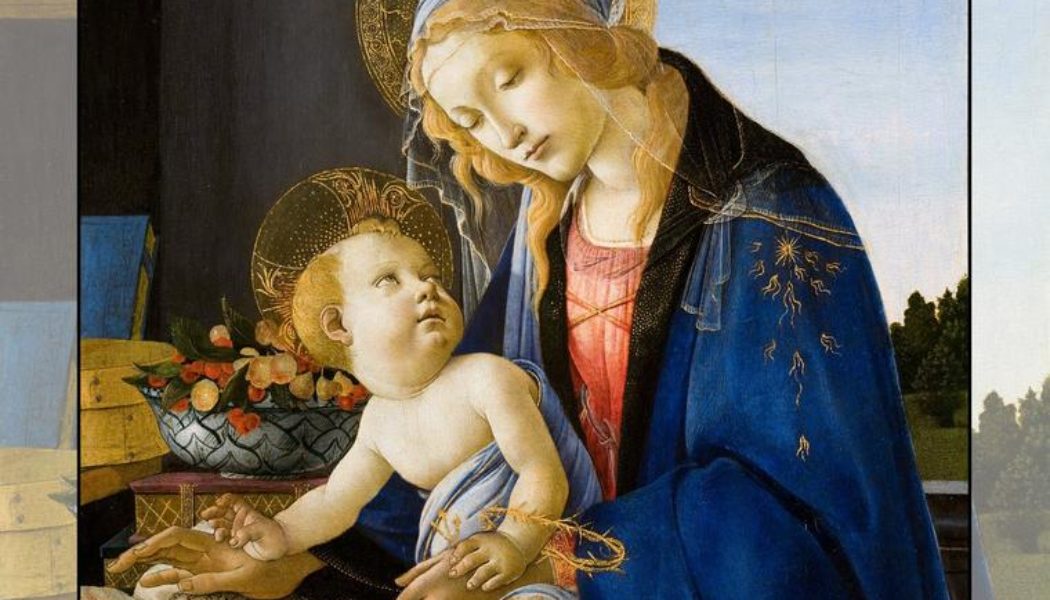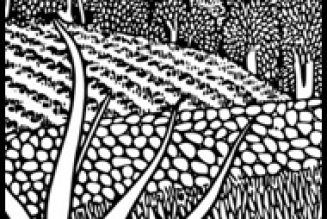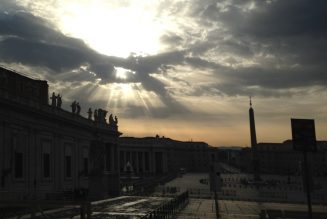
‘The task of believers, and of priests in particular, is precisely to touch the hearts of others, so that they may be opened to the message of the Lord Jesus. In this great task, the contribution that literature and poetry can offer is of incomparable value.’ —Pope Francis, ‘On the Role of Literature in Formation,’ July 17, 2024
Images of the Blessed Virgin are almost ubiquitous in the visual arts. From the earliest times, the Madonna and Child have been a favored source of inspiration for artists, so have images of the Nativity and visions of the Assumption and Coronation of the Virgin.
Even in art depicting Our Lord’s Passion, the Mother of God can be seen standing at the foot of the Cross, accompanying her Son in his suffering. She is also present in numerous musical settings, from Gregorian chant to the many polyphonous antiphons composed in her honor, not to mention the celebrated settings of the Ave Maria by Schubert, by Bach and Gounod, and by countless others. The same can be said of her presence in the literary arts, especially with respect to the numerous poems addressed to her.
She has been less visible, however, in the world of literary fiction. In the four centuries since the advent of the novel, she has been almost conspicuous by her absence. There are exceptions, of course. One thinks perhaps of Franz Werfel’s novel, The Song of Bernadette, which was inspired by the miraculous apparitions of the Blessed Virgin at Lourdes, but, generally speaking, Our Lady’s presence has been more subtle and subdued in modern literature, even subliminal, epitomized perhaps by J. R. R. Tolkien’s claim that he had put all his love and devotion to the Blessed Virgin into his characterization and depiction of Galadriel in The Lord of the Rings.
Perhaps the most powerful presentation of the Virgin in literature is to be found in Dante’s Divine Comedy, which is arguably the greatest literary work ever written. In this marvelous Christian epic, it is the Blessed Virgin who initiates the rescue of Dante from the Dark Wood into which he has strayed. It is she who sends St. Lucy, the patron saint of the blind, to Beatrice, the woman whom Dante loves, and it is Beatrice who sends Virgil to be Dante’s guide through the descent into the Inferno and thence the ascent of Mount Purgatory. Finally, once Dante ascends into Paradise, it is the Blessed Virgin, in answer to an intercessory prayer by St. Bernard of Clairvaux, who attains for the Poet the Beatific Vision of the Son Glorified in the Triune God.
It is, however, a couple of poems by two English saints which will be the focus of the remainder of this brief excursion into the Marian presence in literature. The first is “The Ballad of Walsingham,” sometimes known as “The Lament for Walsingham,” which is usually ascribed to the English Martyr, St. Philip Howard; the second is “The Pilgrim Queen,” written by St. John Henry Newman.
St. Philip Howard’s ‘The Ballad of Walsingham’
“The Ballad of Walsingham,” a lament for the shrine of Our Lady of Walsingham, was written a few decades after the shrine’s destruction by King Henry VIII in 1538. Prior to its destruction, Walsingham had been a major center of pilgrimage for more than 450 years, becoming the major Marian shrine of the whole of Christendom, rivaled only by the shrine of Our Lady of Loreto in Italy. A succession of English monarchs had made pilgrimages there and pilgrims arrived from all over Europe.
If St. Philip Howard is indeed the poet who wrote the Ballad, he would presumably have visited Walsingham in the 1580s, prior to his being imprisoned in the Tower of London in 1585, almost 50 years after the shrine’s destruction. As for the Ballad itself, it evokes the poet’s sadness upon visiting the ruins of the shrine:
Bitter, bitter oh to behold
The grass to grow
Where the walls of Walsingham
So stately did show.
Such were the worth of Walsingham
While she did stand,
Such are the wrackes as now do show
Of that so holy land.
Level, level with the ground
The Towers do lie
Which with their golden, glitt’ring tops
Pierced out to the sky.
Where were gates no gates are now,
The ways unknown,
Where the press of friars did pass
While far her fame was known.
Owls do scrike where the sweetest hymns
Lately were sung,
Toads and serpents hold their dens
Where the palmers did throng.
Weep, weep, O Walsingham,
Whose days are nights,
Blessings turned to blasphemies,
Holy deeds to dispites.
Sin is where our Lady sat,
Heaven turned to hell;
Satan sits where our Lord did sway,
Walsingham, oh, farewell!
St. Philip Howard would spend 10 years incarcerated in the Tower of London until his death of dysentery in 1595. His own body, itself a holy shrine, had been ruined by the same anti-Catholic fanaticism that had desecrated and destroyed the ancient shrine of Our Lady in Walsingham. His eternal reward for such an embrace of suffering for the Faith is to be united with the Blessed Virgin in the eternal shrine in heaven of which she is the queen. This being so, we might be tempted to see St. John Henry Newman’s poem, “The Pilgrim Queen,” as a postscript to “The Ballad of Walsingham,” signifying not merely the Virgin’s exile from England following the Tudor Terror but her prophesied return.
St. John Henry Newman’s ‘The Pilgrim Queen’
“The Pilgrim Queen” begins with the Virgin herself taking up the plaintive cry of “The Ballad of Walsingham” for the destruction wrought by Henry VIII:
“Here I sit desolate,”
sweetly said she,
“Though I’m a queen,
and my name is Marie:
Robbers have rifled
my garden and store,
Foes they have stolen
my heir from my bower.
The Pilgrim Queen, recalling English history in the centuries following the Reformation, speaks of the power of the Puritans in the 17th century who said they could keep her Son “far better than I,” placing him in a “palace of ice, hard and cold as were they.” After this Puritan palace had “all melted away,” the people of England had bartered her Son for “the spice of the desert” and the “gold of the stream,” choosing mercantile materialism over the pearl of great price:
And me they bid wander
in weeds and alone,
In this green merry land
which once was my own.
This sad and sorry scenario would appear to be the unhappy ending for England, this most distressful country which has sent her true Queen into exile. And yet John Henry Newman, England’s most recently canonized saint, prophesies in the final lines of his poem the Return of the Queen:
I look’d on that Lady,
and out from her eyes
Came the deep glowing blue
of Italy’s skies;
And she raised up her head
and she smiled, as a Queen
On the day of her crowning,
so bland and serene.
“A moment,” she said,
“and the dead shall revive;
The giants are failing,
the Saints are alive;
I am coming to rescue
my home and my reign,
And Peter and Philip
are close in my train.”
Beacons of Light and Hope
These two poems by two of England’s saints serve as beacons of light and hope in the gloom of the death culture. They lament that the world, like Dante at the beginning of The Divine Comedy, is lost in the Dark Wood. They show that, like Dante, the world is in dire need of the inspirational goodness of the saints and the beauty of their witness.
They also illustrate that the world is very much in need of the return of the queen which the world’s wickedness has exiled. These two great poet-saints reveal that the pride of the world can only be defeated by the exaltation of the humble. This is, of course, the central message of that greatest of biblical poems, Our Lady’s Magnificat, a poem enunciated by a queen in her lowliness.
It is perhaps fitting, therefore, that this brief discussion of Our Lady in literature should conclude with a reference to the Blessed Virgin’s own Magnificat, the finest of poems by a queen who is herself the greatest Poem that her Son, the Divine Poet, ever created.









